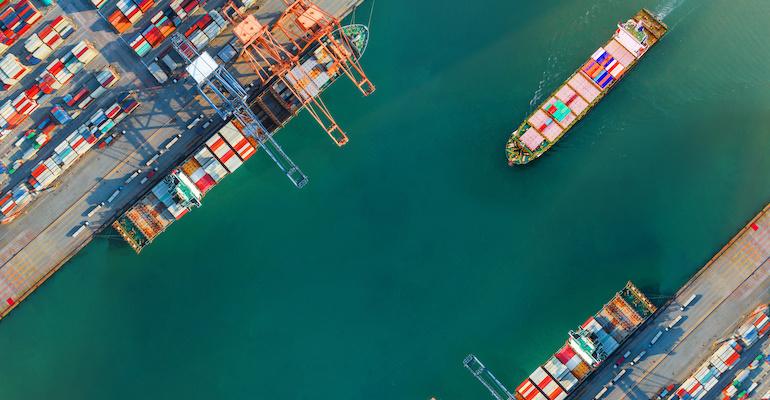The broker’s weekly report shows a chart with the capacity required for the trades to Europe via the Suez Canal in May last year and comparing that to the requirements a year later and the actual vessels deployed, showing a shortfall of 36 ships.
“Despite the fact that already 1.14 million teu of new capacity has been delivered this year so far, the members of the three mega-alliances still lacked 36 ships to fully staff their 25 Asia – Europe loops as of Friday 10 May,” said Alphaliner.
However, should the Red Sea diversions end this month and Suez Canal transits resume, the carriers would have some 54 vessels, of an average size of 14,150 teu, to redeploy, a total of around 764,100 teu.
Stefan Verberckmoes, an analyst at Alphaliner told Seatrade Maritime News: “Indeed, there would be a large overcapacity if the Red Sea gets solved. However, this is not expected to happen soon. Carriers have finally restructured their networks with new rotations in view of the Cape routings.”
The analyst added that another 2 million teu will be delivered this year, “which will help to reduce the current 10% shortage on Asia-Europe. My analysis focused on the Far East – Europe trade only and the alliance services in particular.”
Verberckmoes also points out that extra tonnage is needed in services from India to Europe or from Asia to US East Coast, which will reduce the over-capacity equation, as will the 3% growth in volumes that is also expected.
“I hear from carriers that they expect a strong peak season, which means that the additional capacity is still more than welcome for time being,” added the analyst.
The current shortage of vessels in the trades, as of 10 May, 340 container ships were deployed in Asia–Europe services of the three main alliances, 36 short of the number needed for 25 loops, meaning that lines need to cancel 9.6% of all weekly sailings.
According to Alphaliner data the situation varies for each alliance, with the Ocean Alliance short of 20 ships, while 2M and THE Alliance both require an additional eight vessels.
2M, however, already operates 125 vessels compared to THE Alliance’s 110.
Vessel shortages for the European trades has already seen Maersk and MSC return to vessel sharing to help cope with the discrepancy in necessary capacity for the Cape diversions.
Copyright © 2024. All rights reserved. Seatrade, a trading name of Informa Markets (UK) Limited.
Add Seatrade Maritime News to your Google News feed.  |
